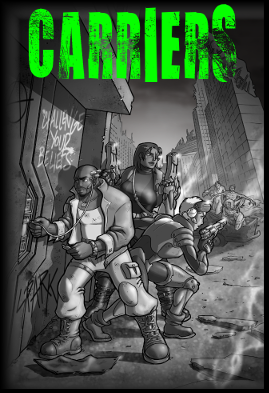A vital part of an engaging RPG is establishing strong connections between the characters and their setting. The stronger those connections, the more meaningful the character actions and player decisions seem to be. We have had examples of this stretching back to the earliest days of alignments, hirelings and deities in D&D. Dresden Files offers places and faces, Fiasco presents Relationships and Apocalypse World deals with Fronts. I designed Spark with Setting Beliefs, Factions, and Faces who represent those factions.
For the ease of this discussion, let’s just label these all as Icons, as exemplified in 13th Age. Before delving in deeper, check out Rob Donoghue’s excellent exploration of this subject [1][2][3] [4] [5] [6] since all of my blathering is based on his analysis. This is also related to Chris Chin’s discussion of Keys, in the other excellent article.
There is a lot of untapped potential in terms of potential Icons and I think it would be useful to unpack the idea. When I design my own games, I have started to ask 5 questions so I can get a handle on all of these setting Icons and design appropriately.
- What: What type of Icon created within the setting? An individual, organization, belief, relationship, event, location, item or idea?
- Who: Among the players, who is connected to a given Icon?
- How: How does the Icon affect the PCs, and vice versa? How do they change?
- When: When during the course of the game do the Icons affect play?
- Where: How does the Icon interact spatially with the world?
Let’s show how this works in practice, shall we?
Fate Core Setting Issues:
Issues and their associated setting Aspects describe the tensions and broader problems in the setting, ones which the PCs will have to deal with during play.
- What: A distinct issue which may consist of an event, organization or idea, with an associated Aspect.
- Who: Everyone interacts indirectly with the Issue, but there are no formal connections to individual PCs. All of the character histories, troubles and high concepts will tend to be associated with the setting Issues.
- How: It is easier for the GM to affect PCs when the Issue is involved thanks to the associated aspect. Significant actions on the parts of PCs can change the Issues over a longer time-scale.
- When: Issues can affect any scene.
- Where: Issues usually extend spatially across the entire area of play. While there may be some specific places where the issue is less significant, it is always there.
Fiasco Relationships:
Beginning a game of Fiasco involves establishing relationships, needs, locations and objects that define how the various characters interact. Relationships are one subset of those elements for the purpose of this discussion.
- What: A single broad category of relationship (Romance) with a more specific detail (Pick-up Artist and Hopeless Romantic)
- Who: Relationships directly shape two specific characters, though they will have larger indirect effects. This defines the past history of two characters.
- How: It establishes the power dynamic between the characters; who is high status and who is low within the relationship.
- When: Relationships establish the backstory, but largely fade to irrelevance once play begins. Relationships affect the PCs, but the PCs actions don’t alter the relationships mechanically.
- Where: Relationships have no fixed spatial location.
AD&D Alignments:
Alignments in AD&D are powerful things that establish not only the importance of morality in decision making, but also a decidedly egalitarian spectrum of ethical positions. All of these discussions are all drawn from 1st edition.
- What: Nine distinct alignments which are combinations of Lawful-Neutral-Chaos and Good-Neutral-Evil.
- Who: Every character interacts with alignments, though there are very real obligations for religious characters to behave in accordance with certain alignments. That said, there are restrictions on alignments for certain classes, which indicates that core activities are antithical to certain ethical perspectives.
- How: Every character can speak “Alignment Languages”, as a beautiful example of the importance of Alignments within the core setting assumption. These languages act as another communication channel, so that like-minded characters can remind the others to behave in accordance with their Alignments. There are also penalties for changing one’s alignment, and the deities in the various pantheons tend to be very judgemental on this subject. Paladins who act in evil or chaotic ways can have their divine blessings revoked, while clerics can lose their divine spells.
- When: Constantly. Particularly in high-stress situations, such as when there are high stakes, divine blessings and correct decision making is rewarded especially. The cleric trying to convert a wounded patient into reforming their behaviour? That is part of the Alignment Icon.
- Where: Relationships are tied intimately with the various religions and kingdoms which are distributed unevenly across a D&D world. The later-day Planescape setting illustrated that perfectly.
What do you think? Would you be willing to examine something else in the comments?

